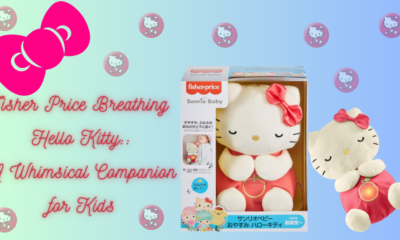Health & fitness
Oridzin: The Antioxidant Powerhouse in Your Fruit Basket

Have you ever wondered what gives apples their vibrant colors and remarkable health benefits? The secret lies in a little-known antioxidant called Oridzin. Nestled within the flavonoid family, Oridzin is a powerful compound predominantly found in various fruits, especially apples. Despite its discreet presence, this antioxidant plays a crucial role in our health, offering anti-inflammatory and immunomodulatory properties. In this article, we’ll delve into what exactly Oridzin is, its health benefits, and why it deserves a spot in your daily diet.
What Exactly is Oridzin?
Oridzin is a type of flavonoid, a group of naturally occurring compounds found in fruits and vegetables known for their antioxidant properties. Chemically, it’s a polyphenolic compound, which means it has multiple phenol units in its structure. This configuration allows Oridzin to neutralize free radicals, molecules that can damage cells and contribute to aging and diseases. News Jotechgeeks
The Discovery of Oridzin
The journey to uncover Oridzin’s secrets began decades ago. Researchers studying the health benefits of fruits stumbled upon this compound and noted its potential. Early studies focused on its antioxidant properties, but as research progressed, scientists discovered its broader health implications. Key researchers in this field have published numerous studies, highlighting Oridzin’s multifaceted benefits.
Oridzin in the Flavonoid Family
Flavonoids are a diverse group of phytonutrients (plant chemicals) found in almost all fruits and vegetables. They are responsible for the vivid colors of these foods and contribute significantly to their health benefits. Oridzin stands out within this family due to its potent antioxidant activity. Compared to other flavonoids like quercetin and kaempferol, Oridzin has shown unique properties that make it a subject of interest in nutritional science and pharmacology.
Health Benefits of Oridzin
Antioxidant Properties: At the core of Oridzin’s benefits is its antioxidant capability. Antioxidants protect your body from oxidative stress, which is an imbalance between free radicals and antioxidants in your body. This stress can lead to cellular damage and is linked to various chronic conditions, including heart disease and cancer.
Cardiovascular Health: Oridzin’s antioxidant properties extend to heart health. It helps in reducing the oxidation of LDL cholesterol, often referred to as “bad” cholesterol. Oxidized LDL is a key player in the development of atherosclerosis, a condition characterized by the hardening of arteries. By preventing this oxidation, Oridzin can help maintain healthy blood vessels and reduce the risk of heart disease.
Skin Health: Oridzin’s benefits are skin-deep too. Its antioxidant properties help protect the skin from UV-induced damage. UV radiation can lead to premature aging and increase the risk of skin cancer. By neutralizing the free radicals generated by UV exposure, Oridzin can help maintain youthful and healthy skin.
Oridzin and Inflammation
Anti-inflammatory Properties: Chronic inflammation is at the root of many diseases, including arthritis, diabetes, and even Alzheimer’s. Oridzin exhibits strong anti-inflammatory properties, making it a valuable compound in managing these conditions. It works by inhibiting the production of pro-inflammatory molecules in the body.
Mechanisms of Action: Oridzin’s anti-inflammatory effects are primarily mediated through its interaction with various signaling pathways in the body. It can inhibit the activity of NF-kB, a protein complex that plays a key role in regulating the immune response to infection. By doing so, Oridzin reduces the production of inflammatory cytokines, which are signaling molecules that promote inflammation.
Research Studies: Numerous studies have demonstrated Oridzin’s anti-inflammatory effects. For instance, research published in the “Journal of Nutritional Biochemistry” showed that Oridzin could significantly reduce inflammation in animal models of arthritis. Such findings highlight the potential of Oridzin as a natural remedy for inflammatory conditions.
Immunomodulatory Effects
Impact on the Immune System: Oridzin doesn’t just fight inflammation; it also modulates the immune system. This means it can help balance immune responses, making it particularly beneficial for individuals with autoimmune diseases, where the immune system mistakenly attacks the body’s own tissues.
Potential Benefits in Autoimmune Conditions: Autoimmune diseases like rheumatoid arthritis and lupus involve chronic inflammation and tissue damage. By modulating immune responses and reducing inflammation, Oridzin may offer relief to patients suffering from these conditions. However, more clinical trials are needed to fully understand its efficacy and safety in this context.
Clinical Evidence: Preliminary clinical studies suggest that Oridzin could be a promising therapeutic agent. For example, a study in the “Journal of Clinical Immunology” reported that patients with autoimmune conditions experienced reduced symptoms and improved quality of life after supplementing with Oridzin. These findings pave the way for more comprehensive clinical trials.
Oridzin in Apples
Concentration in Different Apple Varieties: Apples are one of the richest sources of Oridzin. However, the concentration of this antioxidant can vary significantly between different apple varieties. For instance, red apples tend to have higher Oridzin levels compared to green ones. This variation is also influenced by factors such as cultivation methods and storage conditions.
Role in Apple Coloration: Oridzin contributes to the vibrant coloration of apples. The compound is particularly abundant in the skin of the fruit, giving red apples their distinctive hue. This coloration is not just for aesthetic appeal; it indicates the presence of beneficial antioxidants.
Nutritional Significance: Including apples in your diet is a delicious way to boost your Oridzin intake. These fruits offer a convenient and tasty source of antioxidants that can help protect your health. Eating the skin is especially important, as it contains the highest concentration of Oridzin.
Extraction and Processing
Methods of Extraction: To harness Oridzin’s benefits on a larger scale, efficient extraction methods are essential. Common techniques include solvent extraction and supercritical fluid extraction. These methods ensure that the maximum amount of Oridzin is obtained from the fruit.
Purification Techniques: Once extracted, Oridzin needs to be purified to ensure its effectiveness and safety. Techniques like chromatography are used to isolate Oridzin from other compounds. This purification process is crucial for producing high-quality supplements and pharmaceuticals.
Industrial Applications: Oridzin’s potent antioxidant and anti-inflammatory properties make it valuable in various industries. In the food industry, it’s used as a natural preservative to extend shelf life. In cosmetics, it’s added to products to protect the skin from oxidative damage. The pharmaceutical industry is also exploring its potential for developing new drugs.
Pharmacological Potential
Therapeutic Uses: Oridzin holds promise for several therapeutic applications. Its antioxidant properties can be harnessed to develop treatments for diseases caused by oxidative stress, such as neurodegenerative disorders. Additionally, its anti-inflammatory and immunomodulatory effects open up possibilities for managing chronic inflammatory and autoimmune conditions.
Drug Development Prospects: The pharmaceutical industry is increasingly interested in natural compounds like Oridzin. Researchers are exploring its potential as a lead compound for developing new drugs. By understanding its mechanisms of action, scientists aim to create targeted therapies that maximize its benefits.
Safety and Efficacy: While Oridzin shows great promise, it’s essential to ensure its safety and efficacy through rigorous testing. Preliminary studies have shown that Oridzin is generally well-tolerated, but more extensive clinical trials are needed to establish its long-term safety profile.
Dietary Sources of Oridzin
Foods Rich in Oridzin: Aside from apples, Oridzin is found in other fruits such as grapes, berries, and citrus fruits. Including a variety of these fruits in your diet can help you obtain sufficient Oridzin. It’s also present in smaller amounts in vegetables like onions and kale.
Dietary Supplements: For those who may not get enough Oridzin through their diet, supplements are available. These supplements can provide a concentrated dose of the antioxidant, making it easier to meet your daily needs. However, it’s always best to consult with a healthcare professional before starting any new supplement regimen.
Recommended Intake: There’s no established daily recommended intake for Oridzin yet. However, incorporating a variety of fruits and vegetables into your diet is a safe and effective way to ensure you get enough of this beneficial compound. Aim for at least five servings of fruits and vegetables per day.
Oridzin in Traditional Medicine
Historical Uses: Oridzin has a long history of use in traditional medicine. Ancient cultures recognized the health benefits of consuming fruits rich in this compound. They used these fruits to treat various ailments, from digestive issues to skin problems.
Cultural Significance: In many cultures, fruits containing Oridzin hold symbolic significance. For example, apples are often associated with health and longevity in folklore. This cultural reverence underscores the long-standing recognition of their health benefits.
Modern Reinterpretations: Today, modern science is validating the traditional uses of Oridzin-rich fruits. Research continues to uncover new health benefits, providing a scientific basis for their historical significance. This blend of tradition and modernity highlights the enduring value of natural compounds like Oridzin.
Scientific Research and Future Directions
Current Studies: Research on Oridzin is ongoing, with scientists exploring its potential in various health conditions. Current studies are examining its effects on cancer, neurodegenerative diseases, and metabolic disorders. These investigations aim to uncover new therapeutic applications and deepen our understanding of this compound.
Gaps in Knowledge: Despite the progress made, there are still gaps in our knowledge about Oridzin. More research is needed to fully understand its mechanisms of action and long-term effects. Addressing these gaps will be crucial for developing effective and safe applications.
Future Research Avenues: Future research on Oridzin should focus on its clinical applications, particularly in chronic diseases. Long-term studies are needed to evaluate its safety and efficacy. Additionally, exploring its interactions with other dietary compounds could reveal synergistic effects that enhance its health benefits.
Potential Side Effects and Interactions
Known Side Effects: Oridzin is generally considered safe, but some individuals may experience side effects. These can include digestive upset or allergic reactions, particularly if consuming large amounts of Oridzin-rich foods or supplements.
Drug Interactions: Oridzin may interact with certain medications. For example, its antioxidant properties could affect the efficacy of chemotherapy drugs. If you’re taking any medications, it’s important to discuss potential interactions with your healthcare provider.
Precautionary Measures: To minimize the risk of side effects and interactions, it’s advisable to consume Oridzin as part of a balanced diet rather than relying solely on supplements. If you have any health conditions or are on medication, consult with a healthcare professional before making significant changes to your diet or supplement regimen.
Conclusion
Oridzin is a remarkable antioxidant with a wide range of health benefits. From protecting your heart and skin to modulating your immune system, this compound offers significant potential. Found predominantly in apples, Oridzin is a testament to the power of natural compounds in promoting health and wellness. As research continues to unfold, we can look forward to discovering even more about this intriguing antioxidant and its role in our health.
FAQs
Q: What foods contain the highest levels of Ori’dzin?
Apples, particularly red varieties, are the richest sources of Ori’dzin. Other fruits like grapes, berries, and citrus fruits also contain this antioxidant.
Q: Can Ori’dzin supplements replace a healthy diet?
While Ori’dzin supplements can help boost your intake, they should not replace a balanced diet. Whole foods provide a range of nutrients that work synergistically to support health.
Q: Are there any known allergies to Ori’dzin?
Allergies to Ori’dzin itself are rare, but some individuals may have allergies to the fruits containing it. If you have known fruit allergies, consult with a healthcare professional before increasing your intake.
Q: How does Ori’dzin compare to other antioxidants?
Ori’dzin is particularly notable for its strong antioxidant and anti-inflammatory properties. While other antioxidants like vitamin C and E are also beneficial, Orid’zin offers unique health benefits, especially in modulating the immune system.
Q: Is it safe to consume Or’idzin daily?
Yes, consuming Ori’dzin through a diet rich in fruits and vegetables is safe and beneficial. If opting for supplements, it’s best to consult with a healthcare professional to ensure appropriate dosage and safety.
Health & fitness
Exploring the Connection Between Alcohol Addiction and Anxiety Disorders

Introduction
Alcohol addiction and anxiety disorders are two prevalent and interconnected mental health issues that often coexist, creating a complex cycle that can be difficult to break. Individuals struggling with anxiety may turn to alcohol as a way to self-medicate and alleviate their symptoms, while excessive alcohol use can, in turn, exacerbate anxiety, leading to a vicious cycle of dependence and worsening mental health. Understanding the connection between alcohol addiction and anxiety disorders is crucial for developing effective treatment strategies that address both conditions simultaneously. This article explores the relationship between alcohol addiction and anxiety disorders, the impact of this dual diagnosis, and approaches to treatment.
The Relationship Between Alcohol Addiction and Anxiety Disorders
Self-Medication and Anxiety Relief
One of the primary reasons individuals with anxiety disorders may develop alcohol addiction is the self-medication hypothesis. Anxiety disorders, such as generalized anxiety disorder (GAD), social anxiety disorder, and panic disorder, can cause significant distress, leading individuals to seek relief through alcohol. According to the Anxiety and Depression Association of America (ADAA), alcohol’s depressant effects on the central nervous system can temporarily reduce feelings of anxiety and promote relaxation, making it an appealing coping mechanism for those struggling with anxiety.
The Cycle of Dependence
While alcohol may initially provide temporary relief from anxiety, its long-term use can lead to dependence and addiction. As tolerance to alcohol develops, individuals may need to consume more to achieve the same calming effects, increasing their risk of developing alcohol use disorder (AUD). The National Institute on Alcohol Abuse and Alcoholism (NIAAA) highlights that this cycle of increasing alcohol consumption can worsen anxiety symptoms over time, leading to a situation where both conditions feed into each other, making it difficult to manage either effectively.
Alcohol’s Impact on Anxiety
Alcohol’s impact on anxiety is multifaceted. While it may offer short-term relief, alcohol can disrupt brain chemistry, leading to heightened anxiety, particularly during withdrawal periods. Alcohol affects neurotransmitters such as serotonin and gamma-aminobutyric acid (GABA), which play key roles in regulating mood and anxiety. Chronic alcohol use can lead to imbalances in these neurotransmitters, increasing the risk of anxiety disorders. Furthermore, the withdrawal symptoms associated with alcohol dependence, including tremors, agitation, and panic attacks, can significantly exacerbate anxiety, creating a challenging environment for recovery.
The Prevalence of Co-Occurring Alcohol Addiction and Anxiety Disorders
Statistical Overview
Co-occurring alcohol addiction and anxiety disorders are more common than many realize. Studies have shown that individuals with anxiety disorders are twice as likely to develop alcohol use disorder compared to those without anxiety. The National Epidemiologic Survey on Alcohol and Related Conditions (NESARC) reports that approximately 20% of people with an anxiety disorder also have alcohol addiction. This dual diagnosis presents unique challenges for treatment, as both conditions need to be addressed to achieve lasting recovery.
Impact on Quality of Life
The co-occurrence of alcohol addiction and anxiety disorders can have a profound impact on an individual’s quality of life. The presence of both conditions can lead to greater impairment in daily functioning, increased risk of physical health problems, and a higher likelihood of experiencing social and occupational difficulties. Individuals with this dual diagnosis may also be at a higher risk of suicide, further underscoring the importance of comprehensive treatment.
Approaches to Treatment
Integrated Treatment Programs
Effective treatment for co-occurring alcohol addiction and anxiety disorders requires an integrated approach that addresses both conditions simultaneously. Integrated treatment programs combine addiction treatment with mental health care, ensuring that neither condition is overlooked. According to the Substance Abuse and Mental Health Services Administration (SAMHSA), integrated treatment is associated with better outcomes, including reduced substance use, improved mental health, and enhanced overall well-being.
Cognitive-Behavioral Therapy (CBT)
Cognitive-behavioral therapy (CBT) is one of the most widely used therapeutic approaches for treating both alcohol addiction and anxiety disorders. CBT focuses on identifying and changing negative thought patterns and behaviors that contribute to both conditions. By learning healthier coping mechanisms and strategies for managing anxiety, individuals can reduce their reliance on alcohol as a way to cope. CBT has been shown to be particularly effective in reducing the symptoms of anxiety and preventing relapse in individuals with co-occurring disorders.
Medication-Assisted Treatment (MAT)
Medication-assisted treatment (MAT) can be a valuable component of managing both alcohol addiction and anxiety disorders. For alcohol addiction, medications such as naltrexone, acamprosate, and disulfiram can help reduce cravings and prevent relapse. For anxiety disorders, antidepressants or anti-anxiety medications may be prescribed to help regulate mood and reduce symptoms. It’s important for individuals with a dual diagnosis to work closely with healthcare providers to ensure that medications are used safely and effectively.
Peer Support and Counseling
Peer support and counseling play a crucial role in the recovery process for individuals with co-occurring alcohol addiction and anxiety disorders. Support groups, such as Alcoholics Anonymous (AA) or groups specifically for those with dual diagnoses, provide a sense of community and shared understanding. Counseling, whether individual or group, offers a safe space to explore the underlying causes of addiction and anxiety and develop personalized strategies for recovery.
Lifestyle Changes and Self-Care
In addition to formal treatment, lifestyle changes and self-care practices are essential for managing both alcohol addiction and anxiety disorders. Regular physical activity, a balanced diet, adequate sleep, and stress management techniques such as mindfulness meditation can help reduce anxiety and support overall well-being. Creating a structured routine and avoiding triggers that may lead to alcohol use can also help individuals maintain their recovery.
Conclusion
The connection between alcohol addiction and anxiety disorders is complex and often cyclical, with each condition exacerbating the other. Understanding this relationship is crucial for developing effective treatment strategies that address both conditions simultaneously. Through integrated treatment programs, cognitive-behavioral therapy, medication-assisted treatment, peer support, and lifestyle changes, individuals with co-occurring alcohol addiction and anxiety disorders can achieve lasting recovery and improve their quality of life. Recognizing the importance of addressing both alcohol addiction and anxiety is the first step toward healing and building a healthier future.
References
- Anxiety and Depression Association of America. (2021). Alcohol and Anxiety: Understanding the Connection. Retrieved from [ADAA](https://adaa.org/)
- National Institute on Alcohol Abuse and Alcoholism. (2020). Alcohol Use Disorder: A Comparison Between DSM–IV and DSM–5. Retrieved from [NIAAA](https://www.niaaa.nih.gov/)
- National Epidemiologic Survey on Alcohol and Related Conditions. (2018). Prevalence of Co-Occurring Alcohol Use Disorder and Anxiety Disorders. Retrieved from [NESARC](https://www.nesarc.org/)
- Substance Abuse and Mental Health Services Administration. (2021). Integrated Treatment for Co-Occurring Disorders. Retrieved from [SAMHSA](https://www.samhsa.gov/)
- American Psychological Association. (2019). Cognitive-Behavioral Therapy for Anxiety and Substance Use Disorders. Retrieved from [APA](https://www.apa.org/)
Health & fitness
FDA Recalled Noodles: What You Need to Know

FDA Recalled Noodles: With regards to sanitation in the US, the Food and Medication Organization (FDA) assumes a urgent part in guaranteeing that the items on our supermarket racks are protected to eat. However, regardless of thorough guidelines, food reviews actually happen, and one of the later zeros in has been on noodle items. Whether you love ramen, pasta, or some other kind of noodles, it’s urgent to know about why these reviews occur and what steps you ought to take in the event that you wind up with a reviewed item in your storeroom.
What Triggers a Food Recall?
FDA Recalled Noodles: Food reviews can be set off by different elements, all of which represent a possible gamble to purchaser wellbeing. Normal reasons incorporate pollution with destructive microorganisms like Salmonella or E. coli, the presence of undeclared allergens, or even unfamiliar articles tracked down in the food. On account of noodles, explicit triggers could incorporate tainting during the assembling system, inappropriate naming, or the disclosure of hurtful synthetics like pesticides or weighty metals. Paraguay national football team vs Brazil national football team lineups
The FDA’s Role in Food Recalls
FDA Recalled Noodles: The FDA is liable for checking and guaranteeing the wellbeing of food items in the US. At the point when a potential issue is distinguished, the FDA works with the producer to give a review if fundamental. This can happen willfully, where the organization chooses to review an item, or automatically, where the FDA commands the review because of security concerns. The interaction ordinarily includes distinguishing the impacted item, informing people in general, and guaranteeing that the reviewed item is eliminated from store racks and, if vital, from buyers’ homes.
Recent FDA Noodle Recalls
FDA Recalled Noodles: Lately, a few noodle items have been reviewed because of different security concerns. For example, there have been situations where noodles were found to contain undeclared allergens like peanuts or soy, representing a serious gamble to people with sensitivities. In different occurrences, bacterial defilement has been the guilty party, prompting reviews to forestall foodborne diseases. Significant brands, as well as more modest producers, have been impacted, featuring that no organization is resistant to the potential for a review.
Reasons Behind Noodle Recalls
Noodle reviews can be credited to a few explicit variables:
Pollution Issues: Microorganisms, for example, Listeria or Salmonella can taint noodles during creation, making them risky to eat. Synthetic defilement from substances like pesticides is another worry.
Mislabeling and Allergen Dangers: Inaccurate naming, particularly in regards to allergens, can be hazardous for buyers with food sensitivities. On the off chance that a noodle item contains an undeclared allergen, forestalling potential hypersensitive reactions should be reviewed.
Quality Control Disappointments: Issues in the assembling system, like deficient cleaning or cross-pollution, can prompt the development of hazardous food. These disappointments frequently bring about reviews when they are found.
Health Risks Associated with Recalled Noodles
The wellbeing gambles related with reviewed noodles rely upon the justification behind the review. For instance:
Bacterial Tainting: Eating noodles sullied with hurtful microbes can prompt serious foodborne diseases. Side effects could incorporate queasiness, heaving, loose bowels, and fever.
Hypersensitive Responses: For people with food sensitivities, devouring an item that contains an undeclared allergen can set off extreme responses, including hypersensitivity, which can life-compromise.
Synthetic Tainting: Openness to hurtful synthetic compounds through food can prompt long haul medical problems, including neurological harm and malignant growth.
How to Check If Your Noodles Are Recalled
In the event that you’re worried that the noodles in your kitchen may be important for a review, there are a few stages you can take:
Really look at the FDA Site: The FDA routinely refreshes its review list, which can be gotten to on the web. You can look for explicit items or peruse the rundown for ongoing reviews.
Search for Notices: Numerous retailers will post review sees in stores or on the web. Assuming you’ve bought noodles as of late, actually look at your store’s site for any cautions.
Utilize the Brand’s Contact Data: Assuming you feel somewhat doubtful, contact the maker straightforwardly. They can give data on whether your item is impacted by a review.
What to Do If You Have Recalled Noodles
Assuming you find that your noodles have been reviewed, making a quick move is significant:
Try not to Consume the Item: Regardless of whether you’ve previously eaten a portion of the noodles without issue, it’s smarter to be protected and try not to consume the rest.
Discard the Item Securely: Observe the FDA’s rules for discarding reviewed food to forestall any gamble to other people.
Demand a Discount or Substitution: Numerous makers and retailers offer discounts or trades for reviewed items. Check the review notice for directions on the best way to continue.
Preventing Future Noodle Recalls
While purchasers have little command over the assembling system, there are steps that makers can take to diminish the gamble of future reviews:
Severe Quality Control: Carrying out thorough testing and quality control measures can assist with getting possible issues before items arrive at shoppers.
Legitimate Marking: Guaranteeing that all fixings, particularly allergens, are obviously named is critical for shopper wellbeing.
Standard Reviews: Normal examinations of assembling offices can help distinguish and address potential pollution gambles.
The Impact of Recalls on Brands and Manufacturers
A food review can have huge ramifications for the brand in question. In addition to the fact that it result in can monetary misfortunes because of the expense of the review and lost deals, however it can likewise harm the brand’s standing. Buyers might lose trust in an organization that has a past filled with drove, to a drawn out influence on deals. Moreover, lawful activity from impacted shoppers can additionally strain an organization’s assets.
How Consumers Can Protect Themselves
To shield yourself from the dangers related with reviewed noodles, think about the accompanying tips:
Remain Informed: Consistently check the FDA’s review rundown or pursue review warnings.
Be Careful of New Items: While attempting another brand of noodles, research the organization’s set of experiences with respect to reviews and sanitation.
Store Food Appropriately: Legitimate capacity can assist with forestalling pollution after buy. Keep noodles in a cool, dry spot and adhere to a particular stockpiling directions on the bundling.
Government and Industry Collaboration
The FDA works intimately with food makers to guarantee that items are ok for buyers. This cooperation incorporates standard examinations, sharing of best practices, and quick correspondence in case of a potential security issue. The food business likewise assumes a part in propelling sanitation through development and adherence to stricter wellbeing principles.
Lessons Learned from Noodle Recalls
Each review offers a valuable chance to further develop sanitation rehearses. For makers, this could mean returning to their creation cycles or putting resources into better quality control measures. For purchasers, it fills in as a suggestion to remain educated and mindful about the items we consume.
Conclusion
Noodle reviews, while concerning, are an essential piece of keeping up with food handling principles. By remaining educated and making the suitable strides when a review happens, purchasers can shield themselves and their families from potential wellbeing chances. In the mean time, producers should keep on focusing on quality control and appropriate marking to forestall future reviews. Eventually, food handling is a common obligation between the FDA, makers, and purchasers.
FAQs
Q: How frequently do noodle reviews occur?
Noodle reviews are generally inconsistent, however they do happen, particularly when tainting or naming issues emerge.
Q: How would it be advisable for me to respond assuming I’ve proactively eaten reviewed noodles?
On the off chance that you experience any unfriendly side effects, contact a medical services supplier right away. It’s likewise really smart to report your experience to the FDA.
Q: Might I at any point return reviewed noodles to the store?
Numerous retailers will acknowledge returns of reviewed items and may offer a discount or substitution.
Q: How might I try not to purchase reviewed noodles later on?
Remain informed about current reviews and consider purchasing from brands major areas of strength for with records.
Q: How does the FDA forestall noodle reviews?
The FDA works with producers to uphold food handling guidelines and behaviors customary examinations to guarantee consistence.
Health & fitness
Bun and Cheese: A Jamaican Culinary Tradition

At the point when you consider Jamaican food, energetic flavors and rich social legacy ring a bell. Among the numerous famous dishes from this island country, bun and cheese stands apart as a darling treat that is saturated with custom. In any case, what precisely is bun and cheese, and for what reason is it so extraordinary? How about we jump into this tasty mix of sweet and flavorful, and investigate its set of experiences, fixings, and social importance.
What is Bun and Cheese?
Bun and cheese is a basic yet delightful mix of two fundamental parts: a sweet, flavored bread known as “bun” and a cut of tart, cheese-like cheese. This matching is particularly famous in Jamaica and the Caribbean, where it is much of the time delighted in during Easter but on the other hand is an all year #1. The bun is normally made with dried natural products, flavors, and molasses, giving it a rich, dim variety and a sweet taste that impeccably supplements the sharpness of the cheddar. mosquito control
History of Bun and Cheese
Origins of Jamaican Bun: The starting points of the Jamaican bun can be followed back to the English colonization of Jamaica. The customary English hot cross bun, a flavored sweet bun set apart with a cross on top, was presented by English pilgrims. Over the long run, Jamaicans adjusted the recipe to suit nearby preferences, consolidating fixings like molasses and flavors that were promptly accessible on the island. This brought forth the Jamaican bun, which, in contrast to its English ancestor, is normally portion formed and appreciated during Easter as well as over time.
The Advancement of Jamaican cheese: cheese wasn’t generally a staple in the Jamaican eating regimen, yet over the long haul, it turned into an essential piece of this notable dish. The ccheese generally usually matched with Jamaican bun is a radiant orange, handled cheese that is known for its sharp and tart flavor. While this kind of cheddar may not be local to Jamaica, it has turned into the go-to decision for bun and cheeser darlings across the island. The mix of the sweet, flavored bun with the pungent, tart cheddar makes a one of a kind flavor profile that has turned into a staple in Jamaican families.
Ingredients of Bun and Cheese
Key Ingredients in Jamaican Bun: The Jamaican bun is wealthy in flavor and custom, made with a couple of key fixings that make it really exceptional:
Flour: The foundation of the bun, giving design.
Sugar: Commonly earthy colored sugar or molasses is utilized to improve the bun and give it its unmistakable dull variety.
Flavors: A mix of cinnamon, nutmeg, and allspice gives the bun its warm, fragrant flavor.
Dried Natural products: Raisins and some of the time currants are added for surface and eruptions of pleasantness.
Margarine and Milk: These add extravagance and dampness to the bun, making it delicate and tasty.
The Unique Jamaican cheese: The cheddar utilized in bun and cheddar is normally a handled cheddar, known for its radiant orange tone and tart taste. It is firm, yet velvety, and cuts effectively, making it ideal for layering between cuts of bun. The cheddar’s sharpness slices through the pleasantness of the bun, making a reasonable and fulfilling treat.
How to Make Jamaican Bun and Cheese
Step-by-Step Guide to Making Jamaican Bun: Making Jamaican bun at home is a remunerating experience, and the interaction is somewhat clear. This is the way you can make it happen:
Blend Dry Fixings: Consolidate flour, sugar, flavors, and dried organic products in an enormous blending bowl.
Get ready Wet Fixings: In a different bowl, liquefy margarine and blend in with milk and molasses.
Consolidate: Gradually blend the wet fixings into the dry fixings until a mixture structures.
Heat: Move the batter into a portion dish and prepare at 350°F (175°C) for around 45 minutes or until a toothpick embedded into the middle tells the truth.
Cool and Cut: Let the bun cool totally prior to cutting it.
Instructions to Set up thecheese for Bun and cheese
The cheddar groundwork for bun and cheddar is basic. All you want to do is:
Cut the Cheddar: Cut the cheddar into thick cuts that will hold up well against the bun.
Layer the Bun and Cheddar: Spot a cut of cheddar between two cuts of bun. You can serve it with no guarantees or delicately toast it for a warm, melty rendition.
Cultural Importance of Bun and Cheese
Bun and Cheese During Easter: In Jamaica, bun and cheese is something beyond a bite — it’s an image of Easter. Like how hot cross buns are delighted in Britain during this time, bun and cheddar is a priority on Great Friday. Families assemble to share this treat, frequently with the cheddar being a gift from friends and family. The custom of eating bun and cheddar during Easter has been gone down through ages, making it a treasured piece of Jamaican culture.
Bun and Cheddar in Jamaican Celebrations: Past Easter, bun and cheddar is likewise a famous treat at different Jamaican celebrations and festivities. Whether it’s a birthday, a family gathering, or a public occasion, bun and cheddar is many times on the menu. Its versatility and simplicity of readiness make it a helpful and scrumptious choice for taking care of enormous gatherings.
Nutritional Information
Health Benefits of Bun and Cheese
While bun and cheddar is a treat, it has a few nourishing advantages:
Jolt of energy: The sugars from the bun give a fast wellspring of energy.
Protein: The cheddar adds protein, which is fundamental for muscle fix and development.
Calcium: Cheddar is a decent wellspring of calcium, which is significant for bone wellbeing.
Possible Dietary Worries: Be that as it may, similar to any treat, bun and cheddar ought to be appreciated with some restraint. The bun is high in sugar, and the cheddar is much of the time high in fat and salt, which may not be reasonable for everybody, especially those with dietary limitations, for example, diabetes or hypertension. For a better rendition, you can choose entire grain flour and decreased fat cheddar.
Bun and Cheese Around the World
Bun and Cheese in Caribbean Diaspora: The affection for bun and cheddar isn’t restricted to Jamaica alone. Caribbean people group all over the planet, especially in the US, Canada, and the Unified Realm, have conveyed this custom with them. Caribbean pastry kitchens and shops in these districts frequently sell Jamaican bun and cheddar, particularly around Easter, permitting those a long way from home to partake in a sample of their legacy.
Present day Turns on Customary Bun and Cheddar: Lately, culinary specialists and home cooks the same have explored different avenues regarding new varieties of bun and cheddar. Some have added fixings like chocolate chips or nuts to the bun, while others have explored different avenues regarding various sorts of cheddar, like brie or gouda, for a connoisseur contort on this exemplary dish.
Conclusion
Bun and cheddar is something other than a delicious treat; it’s an impression of Jamaican culture, history, and personality. From its starting points in English culinary customs to its development into a cherished Jamaican staple, bun and cheddar has turned into an essential piece of the island’s culinary scene. Whether delighted in during Easter or as an all year tidbit, bun and cheddar keeps on uniting individuals, both in Jamaica and in Caribbean people group all over the planet.
FAQs
Q: What is the best cheddar to use for bun and cheddar?
The most famous decision is a handled cheddar, known for its tart flavor and dazzling orange tone.
Q: Could I at any point make a better rendition of Jamaican bun?
Indeed, you can make a better rendition by utilizing entire grain flour rather than white flour, diminishing how much sugar, and choosing dried organic products without added sugars. You can likewise take a stab at utilizing diminished fat cheddar to bring down the fat substance.
Q: Is bun and cheddar just eaten during Easter?
While bun and cheddar is particularly well known during Easter in Jamaica, it is delighted in all year as a bite or even a quick bite.
Q: What makes Jamaican cheddar not the same as different cheeses?
Jamaican cheddar, frequently a sort of handled cheddar, is known for its particular dazzling orange tone and tart flavor. It is generally firmer and less smooth than a few different cheeses, making it ideal for matching with sweet Jamaican bun.
Q: Might I at any point substitute the conventional Jamaican cheddar with one more kind of cheddar?
Indeed, you can try different things with various sorts of cheddar, like gouda or brie, for a novel contort on the customary dish. Be that as it may, the exemplary Jamaican experience comes from utilizing the customary handled cheddar.
-

 Entertainment7 months ago
Entertainment7 months ago欧乐影院: Elevating Your Streaming Experience
-

 Art10 months ago
Art10 months agoHunting SVG: A Digital Frontier in Design
-

 Uncategorized7 months ago
Uncategorized7 months ago翻譯社 推薦 中翻韓
-

 Entertainment2 months ago
Entertainment2 months agoOllyhibs: A TikTok Star’s Influence on the Sports Industry
-

 Art10 months ago
Art10 months agoFisher Price Breathing Hello Kitty: A Whimsical Companion for Kids
-

 Health & fitness10 months ago
Health & fitness10 months agoAlevemente: The Shocking Truth About it
-

 Technology10 months ago
Technology10 months agoAM2023x: Unlocking the Future
-

 Education10 months ago
Education10 months ago“Oru Rizzardi Peteando con Su Amiga Guadaaragonn” all about this phrase
